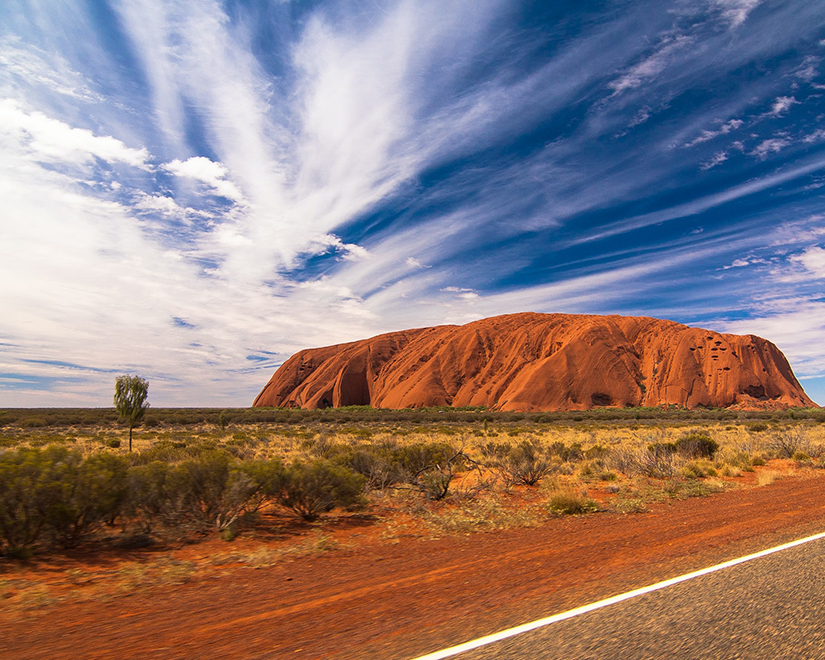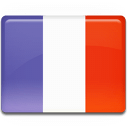Australia National Day

Every year on January 26, Australians celebrate their national holiday. They commemorate the landing of the first British fleet in 1788 at Port Jackson, which corresponds to the current Sydney Harbour. It is a great opportunity to listen to outdoor concerts, watch sports competitions, contemplate fireworks all over the country and especially organize big barbecues, just before the end of the school vacations!
Long story short
This date is nevertheless controversial within the national population. Indeed, it highlights the arrival of the fleet of Captain Arthur Phillip who planted the British flag to announce the creation of a penal colony. The French, who arrived just after, left a small trace of their passage through names of places in the Sydney region. In 1841, the deportees represented three out of five inhabitants of New South Wales - now Sidney - compared to only three out of ten in 1851. The country attracted more and more settlers for whom the presence of convicts was a problem. At the end the deportation stopped in 1840. However, when Australia abandoned its penal status, the French decided to turn the neighboring island of New Caledonia into a convict colony.
The Australian Aborigines and their supporters used the term Invasion Day to describe this day. The beginning of the British colonization marks the beginning of the massacre of millions of Aborigines through the centuries. This trauma, still very vivid in the memories, justifies the approach of associations that militate for a change of date.
January 26 is the day when the Australian territory officially becomes British, although the territory was discovered eighteen years earlier, in 1770, by Lieutenant James Cook. Officially, this national day has been recognized throughout Australia since 1935. But it took on a real cultural dimension at the end of the 1980s. Over time, its name has evolved: first Anniversary Day, then Foundation Day, ANA Day and finally Australia Day.
Today, the colors of the Australian flag mark every corner of the continent. Australians celebrate above all the aboriginal culture and meet at the beach, with friends and family. From Brisbane to Perth through Sydney, with the Sydney festival, the animations are numerous and diverse. In Melbourne, the famous "barbies", so popular with the population, take on a grandiose appearance in the city's public places. Everyone can find "The best public barbecue spots in Melbourne".
Australia in a few figures
The Commonwealth of Australia, whose capital is Canberra, covers an area of approximately 7,700,000 km2, and has a population of twenty million, of which only 1% are Aborigines. The latter have inhabited the island for roughly 40,000 years. The first Europeans arrived in 1606 and began to colonize the country in 1788. The official language is still English, although around 200 other languages coexist. Australia has a federal political system of six states and 11 territories and a system of parliamentary democracy.
Australia is a flat country, largely covered by desert or semi-arid areas. Only the eastern coast is bordered by mountain ranges. Mount Kosciuszko, the highest mountain on the island, culminates at 2,229 m. The temperate climate of the southeast and southwest contrasts with the tropical humidity of the northern part.
The Australian subsurface contains numerous mines. The world's largest producer of bauxite and diamonds, the country is home to mines of coal, iron, lead, copper, gold, silver, uranium - with an export of 12,000 tons. Oil production exceeds 200,000 barrels per day.
A short geological context of Australia
Australia is part of the Indo-Australian plate, which includes two continents, India and Australia separated by the Indian Ocean. They are moving northwards at an average speed of 70 mm/year.
In the Cambrian, Australia belonged to the supercontinent of Gondwana which included South America, Africa, India, Madagascar and Antarctica. During the Mesozoic, this supercontinent eventually split, the last Australia-Antarctica break up having started 100 My ago.
Australia contains very old geological rocks called cratons, dated from more than 2.5 billion years, when a single continent without any form of life shaped the Earth's surface. Three of these cratons play a particularly important role: the Yilgarn craton in the west, the Pilbara craton in the north and the Grawler craton in the south. During the Proterozoic, between 2500 My and 545 My, their erosion and the formation, in the periphery, of sedimentary layers containing iron oxide due to the enrichment of oxygen in the air, are at the origin of the "Banded Iron beds", sediments composed of successive layers of iron ore - hematite - clay, gold, uranium, copper, lead and zinc accumulated by accretion.
These three portions of the continent apparently collided, following tectonic movements, and formed the supercontinent Rodinia between 1.3 and 1.1 billion years ago. Initially the northern and western cratons would have associated well before the southern craton, between 830 and 750 My, when the northern part of the supercontinent Rodinia started to break up. At this time the cratons collided to form a sedimentary superbasin, the Centralian Superbasin. The Archean rocks of the Pilbara craton contain the first evidence of life.
At the time of the Rodinia fracture, about 750 My ago, the tectonic plates supporting present-day China, East Antarctica, Southern Africa, India and Australia formed East Gondwana. They collided with the western part 600 million years ago. The Congo Craton is thus caught in a pincer movement and this displacement causes the Pan-African orogeny. Two major phenomena characterize the following period, called Paleozoic, between 545 and 251 Ma. From 545 to 390 Ma, warm and shallow seas cover the center of Australia while a volcanic island arc develops in the east. These two phenomena lead to the deposition of volcanic and marine sediments that form the continental crust, currently the east of the country. The peak of the orogeny has bene dated between 387 and 360 My.
The oldest known plant fossils date from the Late Silurian and Early Devonian. They were found near Victoria in marine deposits called Baragwanathia Assemblage due to the prevalence of vascular plants called Lycophytes. Numerous aquatic plants as well as shrubs appear then in Antarctica and Australia.
The continents - Gondwana, Euramerica, and Siberia/Angara - which had drifted independently eventually collided to form Pangea from the Devonian to the Carboniferous, about 350 My ago, resulting in a mixing of flora and fauna. Pangea breaks up at the beginning of the Jurassic. The continent underwent a period of glaciation during the Carboniferous, around 330 My, which caused a strong glacial erosion. Coal deposits in shallow basins were formed at this time. Then river basins gradually covered the Australian landmass during the warmer Mesozoic period, between 251 and 140 My. Wet conditions favored the appearance of peatlands, especially in the east.
By 140 million years ago, Gondwana began to break up. Between 140 and 99 Ma, the sea covered a large part of the land. At the same time, between 120 and 105 My, volcanic phenomena caused uprisings in Eastern Australia and the appearance of the Tasman Sea in the southeast and the Coral Sea in the north. The climate was hot and humid. Finally, between 85 and 65 My, Zealandia collapsed and broke away.
Then Australia dissociated from Antarctica and became an isolated continent, 50 My ago. The climate changes gradually. It became warmer and less humid around the middle of the Oligocene era - between 30 and 15 My - as Antarctica became an icy land and global temperatures decreased. The unique fauna that originated in Gondwana, such as marsupials, survived and adapted to Australia.
Species migration was only possible during certain ice ages of the Pleistocene and Holocene because the seas separated the main land masses. Men finally invaded the continent at the end of the Pleistocene, 50,000 years ago. Burnt wood found in the sediments characterize the arrival of the first aborigines. The practice of burning certainly contributed to the multiplication of sclerophyllous forests, especially on the east coast of Australia.
Eliis and Australia
The Eliis company opened an office in Perth in 2017. Experts in seismic interpretation who know the territory and its geology perfectly work there and operate the PaleoScan software on a daily basis. The offices will nevertheless be closed on January 26. We wish them all a great national holiday!
Sources
https://perspective.usherbrooke.ca/bilan/servlet/BMPays?codePays=AUS
http://www.atelierpaleos.fr/wp-content/uploads/documents/contributions/cinqsites-australie.pdf

